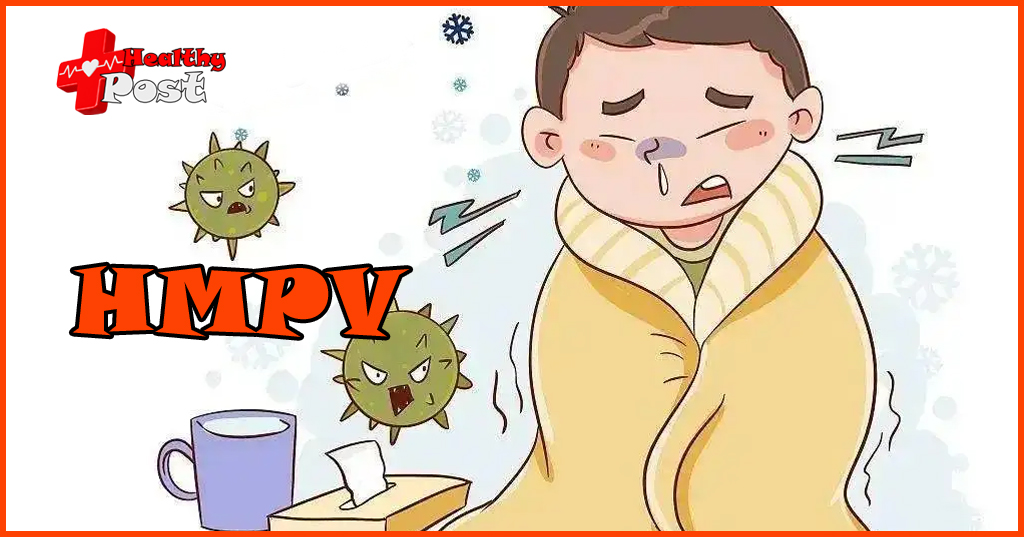
What is HMPV, symptoms, prevention,treatment
Human Metapneumovirus (HMPV) is a respiratory virus whose name is incorrectly written as ” human metapneumovirus ” in the search results. HMPV is a single-stranded RNA virus that was first discovered in the Netherlands in 2001and is widely present around the world. It usually causes acute respiratory infections , especially in late winter or early spring.
HMPV infection generally affects children, but adults, especially the elderly and those with weakened immune systems, can also be infected. Children may experience varying degrees of symptoms, including fever, cough, nasal congestion, difficulty breathing or shortness of breath . Some children may also experience symptoms such as otitis media, diarrhea, vomiting, rash, and febrile convulsions. In adults, HMPV infection usually causes milder illness, with symptoms including cough, hoarseness, runny nose, and sputum. HMPV infection may also cause bronchitis or pneumonia, with symptoms similar to upper and lower respiratory tract infections caused by other viruses .
The transmission routes of HMPV mainly include direct contact and indirect contact. Human metapneumovirus infection is mostly transmitted through the patient’s coughing and sneezing secretions.
There are currently no specific antiviral drugs available to treat HMPV infection. Generally, for most patients, HMPV infection is self-limited, meaning it will recover on its own. Treatment focuses on relieving symptoms, including rest, adequate hydration, and over-the-counter antipyretics. For high-risk groups, such as immunocompromised patients and the elderly, medical intervention may be required, including antiviral drugs and supportive care .
Be careful! HMPV virus warning
HMPV cases are reported to be increasing in Malaysia. In 2024, 327 HMPV cases were reported in the country, a 45% increase compared to 225 cases in 2023.

Malaysia’s Ministry of Health urged the public to take preventive measures, including washing hands frequently with soap, wearing masks and covering their mouths and noses when coughing or sneezing, The Straits Times reported .
“The public is advised to proactively take care of their own health and prevent infecting others, especially in closed and crowded places,” the health ministry said. “This includes those planning to travel to high-risk countries.”
Meanwhile, India reported two cases of human metapneumovirus (HMPV). Two infants in Bengaluru, Karnataka, were infected with the virus, the Union Health Ministry said on Monday (6 January 2025). A case is also suspected in Gujarat.
The HMPV cases in India are a three-month-old girl and an eight-month-old boy who were treated at the Bangalore Baptist Hospital . According to Indian media reports, both children developed symptoms of pneumonia, and the girl has been discharged from the hospital and the boy is recovering.
The Indian Ministry of Health issued a statement clarifying the status of the virus, saying, “HMPV has spread globally, including in India, and cases of respiratory illness associated with HMPV have been reported in various countries.”
The surge in cases coincides with cooler weather and increased indoor activity, conditions that often facilitate the spread of respiratory viruses. Health officials stressed that the surge is in line with seasonal trends.
Will HMPV spread to other countries?
Cambodia’s infectious disease control department has issued a warning about HMPV, noting its similarities to Covid-19 and influenza.
In neighboring India, officials said there was no need to panic because HMPV is “just like any other respiratory virus.”
Who is most at risk for HMPV infection?
HMPV can affect people of all ages, but the most vulnerable groups include:
– Children under five years old, especially infants.
– Elderly people, especially those over 65 years old.
– People with weakened immune systems or chronic respiratory diseases such as asthma or COPD .
How is HMPV spread?
HMPV is spread by:
– Respiratory droplets produced by coughing or sneezing.
– Close contact, such as shaking hands or touching an infected person.
– Touching a contaminated surface and then touching your mouth, nose, or eyes.
– The virus usually circulates seasonally, peaking in late winter and spring in temperate regions.
What are the symptoms of HMPV?
According to the CDC, symptoms include:
-Cough and runny or stuffy nose.
-fever.
-Sore throat.
-Wheezing or shortness of breath in severe cases.
In more severe cases, it can escalate into bronchitis, pneumonia, or asthma exacerbations.
How is HMPV diagnosed?
Testing is rarely done unless symptoms are severe or as part of an outbreak. Diagnostic methods include:
– Nucleic acid amplification test (NAAT): detects viral genomes in respiratory secretions.
-Immunofluorescence or ELISA : detects viral antigens.
How to prevent HMPV?
-CDC recommends the following precautions:
-Wash your hands often with soap and water for at least 20 seconds.
-Avoid touching your face with unwashed hands.
-Wear masks in crowded places during the pandemic.
-Stay home when you are sick to prevent the spread of the virus.
– Clean frequently touched surfaces regularly.
Is there a treatment for HMPV?
There is currently no specific antiviral treatment or vaccine for HMPV. Symptom management includes:
-Stay hydrated and get plenty of rest.
-Use over-the-counter (OTC) medicines to treat pain, congestion, and fever.
-Severe cases may require hospitalization for oxygen therapy or intravenous fluids.
How does HMPV compare to COVID-19?
-HMPV and COVID-19 both cause respiratory symptoms such as cough, fever, congestion and shortness of breath. They can also spread through respiratory droplets.
-HMPV: peaks in winter and spring.
-COVID-19: Spreads year-round due to evolving variants.
-After the COVID-19 lockdown, HMPV cases surged as the population was re-exposed to respiratory pathogens.
When should I see a doctor?
See your healthcare provider if you experience any of the following symptoms:
-Worsened after a few days.
– Includes difficulty breathing or cyanosis (bluish discoloration of the skin).
-Occurs with a chronic health condition such as asthma or COPD.
Is HMPV a new pandemic threat?
No, HMPV is not a new virus nor is it an imminent pandemic threat. Seasonal surges are common, especially in the winter. However, the increase in cases following the introduction of COVID-19 restrictions is causing concern.
The HMPV virus was first identified in children in the Netherlands in 2001. HMPV infection usually occurs before the age of five years and can lead to lifelong reinfection because the immune protection induced by the virus is too weak to prevent repeated infections.
The virus causes upper and/or lower respiratory tract infections, with lower respiratory tract infections being the most common. While the virus usually causes only mild illness, it can cause severe illness requiring hospitalization in children, immunocompromised individuals, and the elderly.
A 2021 paper noted that 3%-10% of hospitalizations for children under 5 years old and 1% of deaths related to acute lower respiratory tract infections worldwide in 2018 were attributable to HMPV. The study also found that children under 6 months old, especially those in low-income and lower-middle-income countries, are at greater risk of dying from the HMPV virus.

One thought on “What is HMPV, symptoms, prevention,treatment”